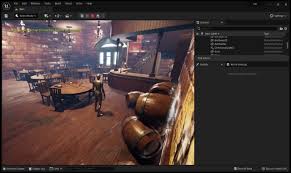Creating a game engine
Creating a game engine is a complex task that involves a deep understanding of computer graphics, physics, audio, and more. It typically requires knowledge of programming languages, algorithms, and data structures. Below is a very high-level overview of the steps involved in creating a simple game engine:

1. **Define Requirements:**
- Clearly define the requirements and goals of your game engine. What type of games will it support? What features do you want to include (graphics, physics, audio, scripting, etc.)?
2. **Select Programming Language:**
- Choose a programming language that suits your goals. Popular choices for game engines include C++, C#, and Python.
3. **Graphics Rendering:**
- Implement a graphics rendering system. This involves handling the display of 2D or 3D graphics, shaders, textures, lighting, and other graphical elements.
4. **Physics Engine:**
- Develop a physics engine to simulate realistic movements and interactions between game objects. This includes collision detection, rigid body dynamics, and possibly soft body physics.
5. **Audio System:**
- Implement an audio system to handle sound effects and background music. This may involve integrating with audio libraries or APIs.
6. **Input Handling:**
- Develop a system to handle user input, including keyboard, mouse, and controller input.
7. **Scene Management:**
- Create a scene management system to organize and manage game objects in the game world. This includes loading, unloading, and updating scenes.
8. **Game Logic:**
- Implement the game logic that dictates how game objects behave. This may involve scripting languages for flexibility.
9. **User Interface (UI):**
- Design and implement a user interface system for displaying menus, HUDs (Heads-Up Displays), and other UI elements.
10. **Networking (Optional):**
- If you plan to create multiplayer games, implement networking functionality for communication between clients and servers.
11. **Optimization:**
- Optimize the engine for performance. This may involve techniques such as culling, LOD (Level of Detail), and efficient memory management.
12. **Testing:**
- Conduct thorough testing to identify and fix bugs. This includes unit testing, integration testing, and performance testing.
13. **Documentation:**
- Document your code and provide clear documentation for developers who may use your game engine.
14. **Community and Support (Optional):**
- If you plan to share your engine with others, consider creating a community around it. Provide support and documentation for external developers.
15. **Iterate and Update:**
- Game engines are often evolving projects. Regularly update and iterate on your engine to add new features, improve performance, and fix any issues.
Creating a game engine is a significant undertaking, and many game developers choose to use existing engines (such as Unity, Unreal Engine, or Godot) rather than building their own from scratch due to the complexity involved. If you're new to game development, it's often beneficial to start by creating games using existing engines before attempting to build your own.

No Comments have been Posted.